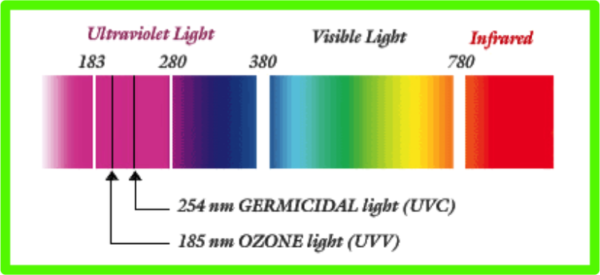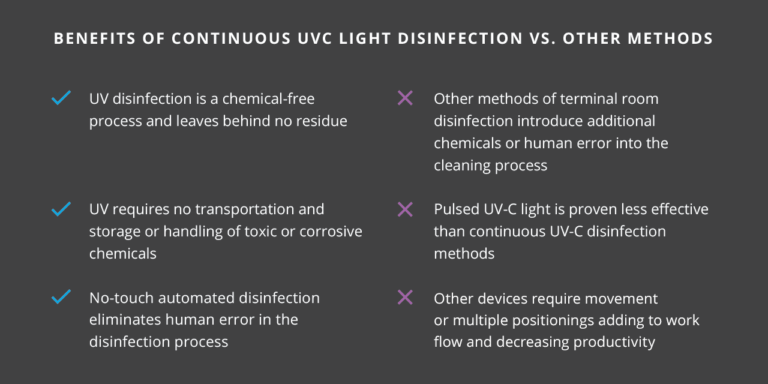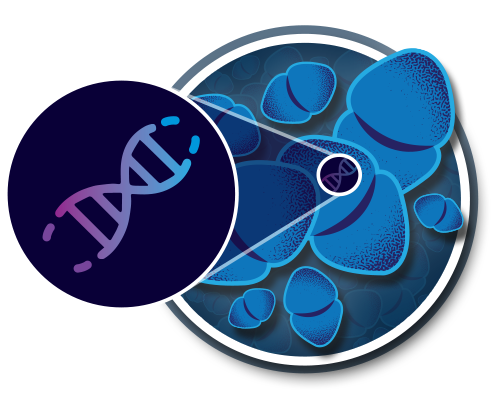Why UVC?
What is UVC Light, and How Does It Kill Germs?
WHAT IS UV LIGHT?
between X-rays and visible light. We are exposed to low levels of UV light from the sun’s rays every day, although
much of the UV energy is absorbed by the ozone layer.
Ultraviolet Light
nanometers to 780 nm. As a reference, most household lamps are between 500 and 700 nm.You may also be
familiar with UVA and UVB (280nm-400nm), related to suntans and sunburns and used in tanning bed applications.

Why does UVC work?
At the foundation of a suntan or sunburn is skin cell damage caused by Ultraviolet-A and -B rays given off by the sun. UV rays are harmful. SPF 30, Earth’s atmosphere, and evolution have allowed us and most organisms to develop a tolerance to moderate levels of UVA and UVB. That’s the big difference.
The sun gives off UVC, too, but it’s not strong enough to penetrate Earth’s atmosphere. So, there’s been no chance for infectious bacteria and viruses to develop a similar immunity. Hospitals use UVC to kill germs because its germicidal characteristics can be unequivocally relied upon.
Who uses UVC?
UVC is commonly used in hospitals, air and water filters, microbiology labs, etc. They rely on high strength UVC for disinfecting because it works. It kills germs quickly and effectively. UVC rays attack DNA and paralyze all cellular functions. Bacteria, viruses, and even antibiotic-resistant superbugs have no tolerance to UVC. UVC=dead, that’s it. The germs are dead and unable to contaminate samples or be “caught” by a patient in a hospital.
UVC bulbs, our geeks insist “lamps”, are long linear cylinders–like the bulbs in a high school computer lab or that scene from that one movie. Effectiveness is a function of UVC strength and exposure time. Lamps are normally positioned at short distances from the “target disinfectee” because it works most effectively in the lamp’s line of sight.
WHY USE UVC LIGHT TO DISINFECT?

HOW DOES UVC DESTROY GERMS?

WHAT TYPE OF UV LIGHT IS GERMICIDAL?
There are three UV light wavelength categories: UVA, UVB and UVC. Our products produce UVC, the only wavelength known to be germicidal. UVC utilizes short-wavelength ultraviolet radiation (shorter than UVB and UVA, which are NOT germicidal) that is harmful to microorganisms.
Broad Spectrum UV disinfection often claims to be more effective than short wavelength UVC, but ultimately wastes a considerable amount of energy with no documented increase in effectiveness – only short wavelength UVC produces the amount of energy necessary to kill microorganisms.